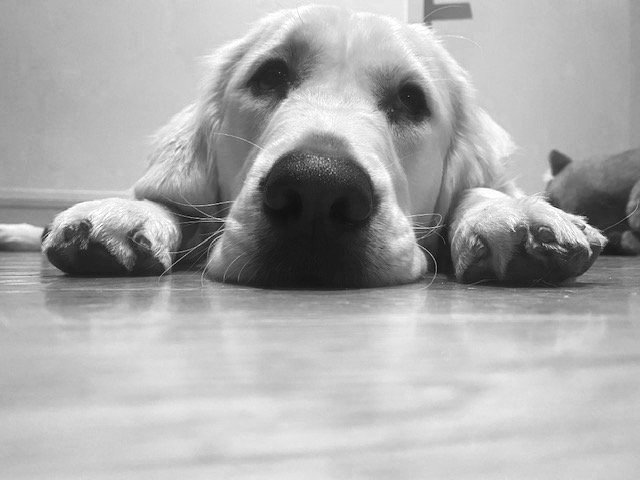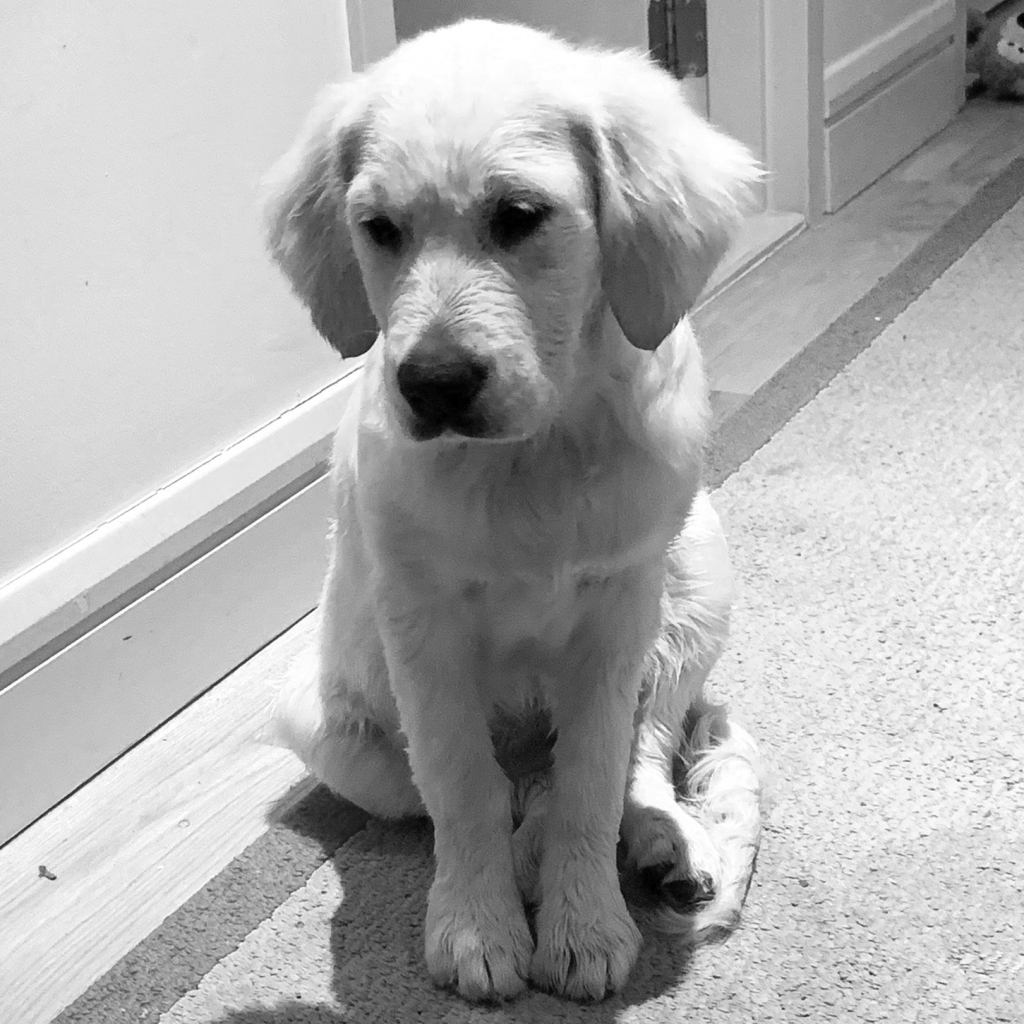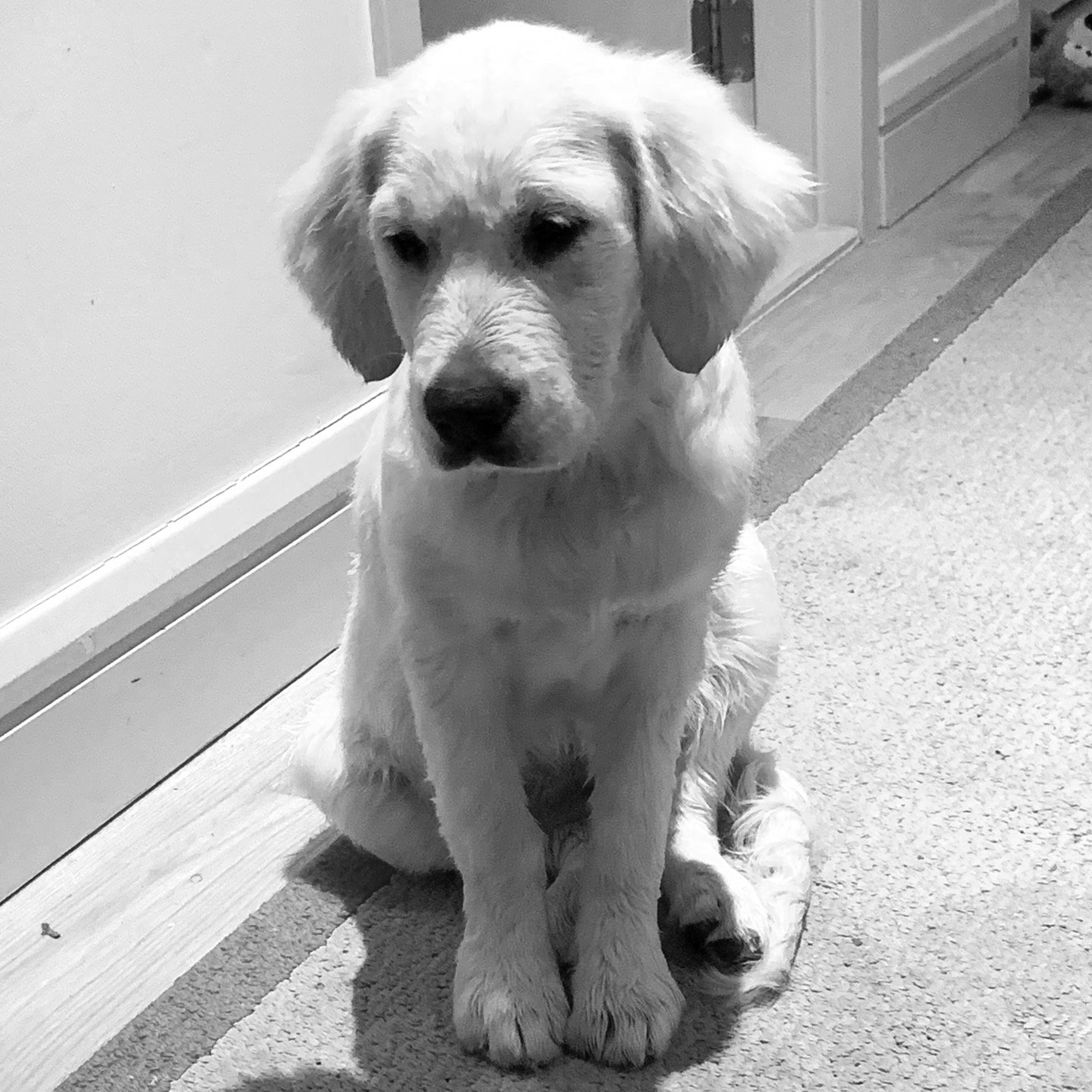


Like the overly anxious dog owner I am, I worry a lot about whether my dog is “OK.” It doesn’t help that sometimes she looks really sad for no reason at all. Whenever I catch her like this, I immediately start to run through my checklist of things that she might want or need:
Is she hungry? She already ate.
Does she need more water? She has that.
Has she been on a walk? Yes, twice.
Is she bored? No, she’s just come back from playing with her friends in the park.
My husband and I have a conversation like this at least once a week:
Me: Is she OK?
Him: Yes
Me: She looks sad.
Him: That’s just her face.
There are legitimate reasons for dogs to be very sad, and that often results from some type of neglect, trauma, or illness. If your pup is experiencing sadness that might result from any of those issues, it’s best to have him or her evaluated by a veterinarian.
If all of my pups’ needs have been met and she’s not suffering from trauma, illness or neglect, none of those apply (as is the case for my dog) then why does she look so sad? Is she actually feeling that way, or is that just the way her face looks?
Dogs that look at their owners “with a sad or yearning look probably want something—a trip to the park, a biscuit, a hug, a game of fetch—and it is then up to the owner to decide whether or not to comply with the dog’s wishes,” says Dr. James Serpell, Professor of Ethics & Animal Welfare Emeritus at the University of Pennsylvania School of Veterinary Medicine.
Have Dogs’ Features Evolved to Make Them Look Sad?
Modern domestic dogs have come a long way from their wolf ancestors. A general theory is that dogs “self-domesticated in order to co-opt our need to take care of them,” says London Wolff, PhD candidate at the University of Lincoln – Nebraska, and a researcher in the Canine Cognition and Human Interaction Lab there. Wolves have an innate system for caring about the group, that’s one of the reasons that dogs have permeated human society and evolved alongside us, she explains. Over time, humans began breeding dogs for certain characteristics that make them look “cute” to us, like ears that droop or big eyes.
A 2019 study called the “Evolution of facial muscle anatomy in dogs” found that facial muscular changes in dogs can be linked to improving communication with humans. In particular, the ability of a dog to move its eyebrows (unlike wolves) is similar to movements we make when we’re sad. This trait may be more likely to elicit a caregiving response from humans.
“There’s no evidence that dogs move this [eyebrow] muscle intentionally, but it creates an exaggerated movement that for us means ‘dog,’” the leader of the study, the University of Portsmouth psychologist Juliane Kaminski told National Geographic.
Take a look at this report from WIRED to see this type of canine facial movement in action:
Human-dog eye contact has also been found to create a positive feed-back loop of oxytocin, not unlike what is experienced between mothers and infants. The traits that allowed for enhanced eye contact are likely those that manifested over time, resulting in deeper bonds between humans and dogs.
“I do believe that we have unconsciously selected dogs to respond to us like puppies by soliciting our care and our help,” says Serpell. “Puppy-dog eyes are part of that process. They are evolved characteristics that do not occur in the dog’s wild ancestor and they appeal to our parental, nurturing instincts and make it more likely that we’ll provide the dog with what it wants.”
Does My Dog Know What She’s Doing When She Pouts?
It’s more likely that she knows what she wants, and not necessarily that she is pouting, says Serpell. When she lays in front of the door with her head in between her paws, looking sad because she wants to go to the park, she’s definitely communicating her wants. However, Serpell is skeptical that she is aware of the effect her pouting might have on me. It’s more likely that she has learned that acting in a certain way can result in her getting what she wants. “She probably doesn’t know or care why you react in this way as long as it has the desired effect,” he explains.
If a dog knows that certain behaviors will result in the outcomes they want, they will continue that behavior, adds Wolff. It’s as simple as that!
Do Dogs Feel Emotions The Same Way Humans Do?
“There is plenty of evidence that all mammals feel and express basic emotions such as love, anger, fear, suffering, et cetera,” says Serpell. “It is less clear whether they all experience more complex, secondary emotions such as guilt, shame, jealousy, pride, and so on.” For example, many dog owners believe that their pup looks “guilty” when it’s done something wrong, but research shows that the dog has learned that when its owner is mad, punishment may be on the way, and that is what is reflected in the dog’s “guilty” appearance.
The Bottom Line
Your dog can look sad and you don’t need to worry unless he or she is suffering from some type of trauma, sickness or neglect.
